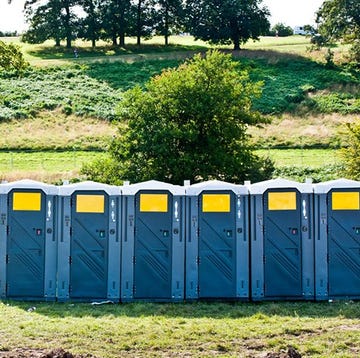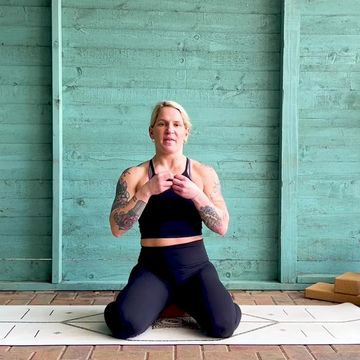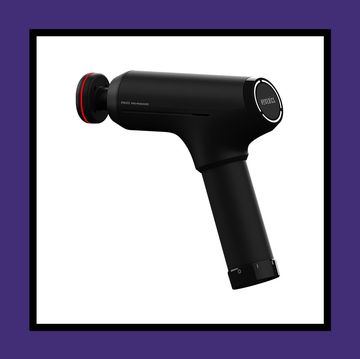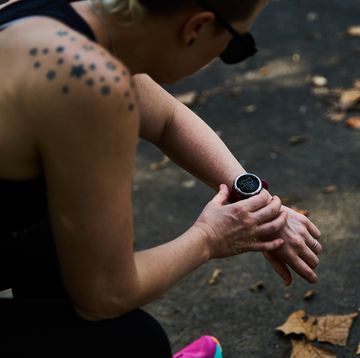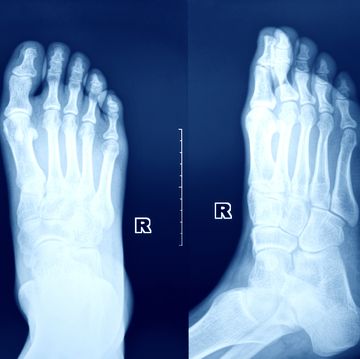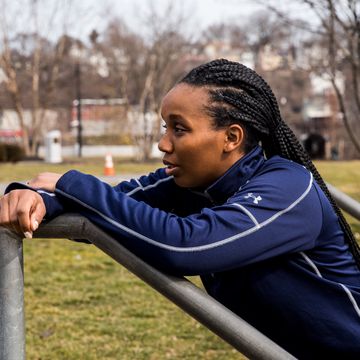What is Pilates?
Pilates may resemble yoga - at least when it comes to Pilates mat classes - but in fact, it's essentially a form of strength training. Rather than a focus on flexibility, it's more about improving muscle tone. It was originally devised to use a special set of equipment, usually called a Reformer machine or bed. However, there are also many Pilates workouts that can be done on a mat at home, with no additional equipment required, and these can be brilliantly effective for runners wishing to strengthen their core muscles and address imbalances that could lead to injury.
Unlike yoga, Pilates is also a relatively recent invention, dating back to the 1920s. Joseph Pilates, it's inventor, was born in Germany in 1883. He was a sickly child, suffering from asthma, rickets and rheumatic fever. But rather than succumb to a lifetime of poor health, he decided to dedicate his life to improving his own physical strength. Introduced by his father to gymnastics and body building, he soon improved his physique so much that he even posed for photographs and anatomical charts that showed good muscle development
Pilates moved to England to work as a circus performer and boxer, but was interned, along with other German nationals, during the First World War. During this period he developed his technique of physical fitness, teaching his fellow internees and then working in a hospital on the Isle of Man. It was there that he actually developed the first version of his famous 'reformer' machine, by attaching bed springs to hospital beds to help support the limbs of patients unable to walk. Later, he emigrated to the US and together with his wife Clara, set up a gym in New York, where his system became particularly popular with dancers.
Today, pilates classes feature specific sets of exercises - which all have adaptations to suit every level - to improve core stability and encourage better posture. While studio classes might still feature the Reformer machine, others will use mats, perhaps with additional simple equipment like stability balls, resistance bands or even foam rollers.
Why should runners do Pilates?
Runners can hugely benefit from Pilates because, simply, it can make you a better runner. In a 2018 study published in Plos One, trained runners who took part in a 12-week course of pilates (which consisted of of two sessions of one hour each per week) significantly improved their 5km time. Stability and core strength is essential for an efficient running technique and to help you avoid injury. Pilates is particularly good at focussing on the 'whole' core, including lower back - often runners tend to focus on the abdominal muscles, which comprise only part of your core.
Because running is a repetitive movement, where your body is largely working in one plane in one direction, a small imbalance to the muscles or gait can easily become magnified until it becomes an injury. Pilates can really help to identify and strengthen these weaknesses.
What’s the difference between mat Pilates classes and Reformer Pilates?
Both classes work the same muscles, just in a slightly different way. Matwork can be done without any equipment except some space and a comfortable mat or towel, though sometimes classes might involve balls, bands or rollers which can add an extra challenge. Reformer classes use the Universal Reformers (see one here). These are frame structures with adjustable springs and pulleys that provide resistance as exercises are carried out, and give a symmetrical grid to work in.
What are the benefits of Pilates?
With Reformer machines and classes, the closed chain environment can provide a particularly effective workout and particularly help with alignment issues. This can be particularly useful, for instance, with runners who have knee problems. Though Pilates is suitable for many different activities, there are certain Reformer movements that can also be particularly running-focussed, such as using the attachment known as a jump board, jump board, which is great for improving your running action.
In terms of matwork, the main benefit is of course that you can do it anywhere, and at any time - and that could be either before and after your run. It's also more affordable - Reformer classes can often be more expensive. The simple Pilates accessories used in matwork are widely available to buy, and there are many excellent free youtube tutorials, such as Blogilates.
Should I do Pilates before or after my run?
As Pilates is a low impact activity, and won't leave you very tired, you can pretty much fit it in whenever you have time without compromising your run. Pilates moves can be a great way to warm up, engage muscles and prepare them for a session. Here are some pre-run Pilates moves for better form.
Where are the best resources for Pilates?
There are a huge array of Pilates resources online, many of them free. The NHS even offers a series of videos. Pilates Anytime is a highly-rated paid app/ site with a huge library and variety of classes, and it does offer a 15 day free trial to see if you want to sign up.



